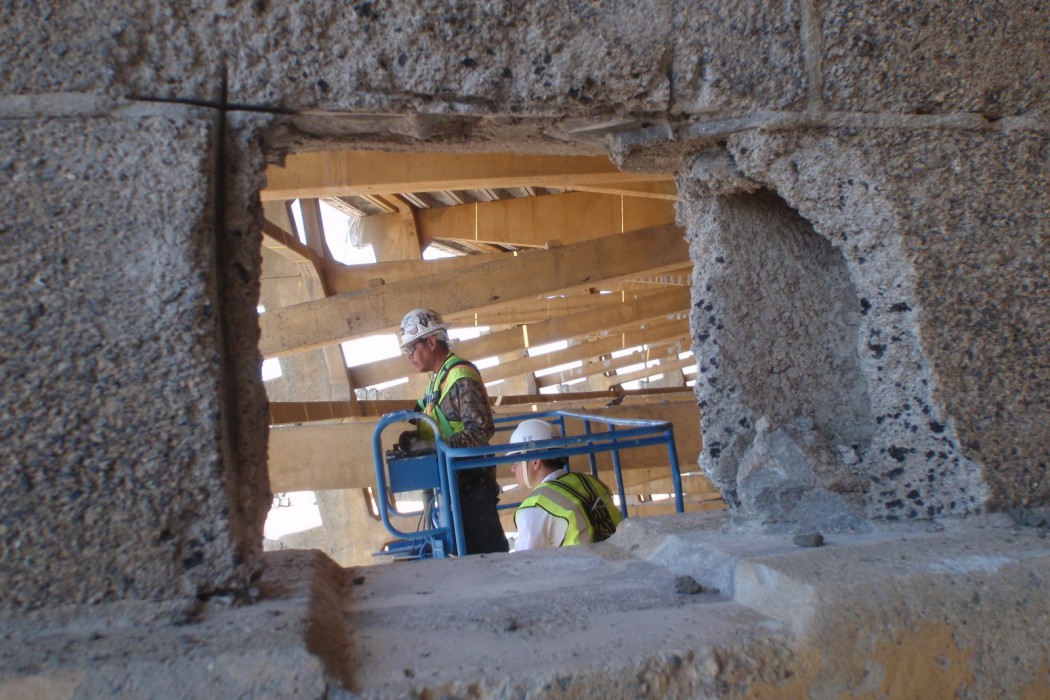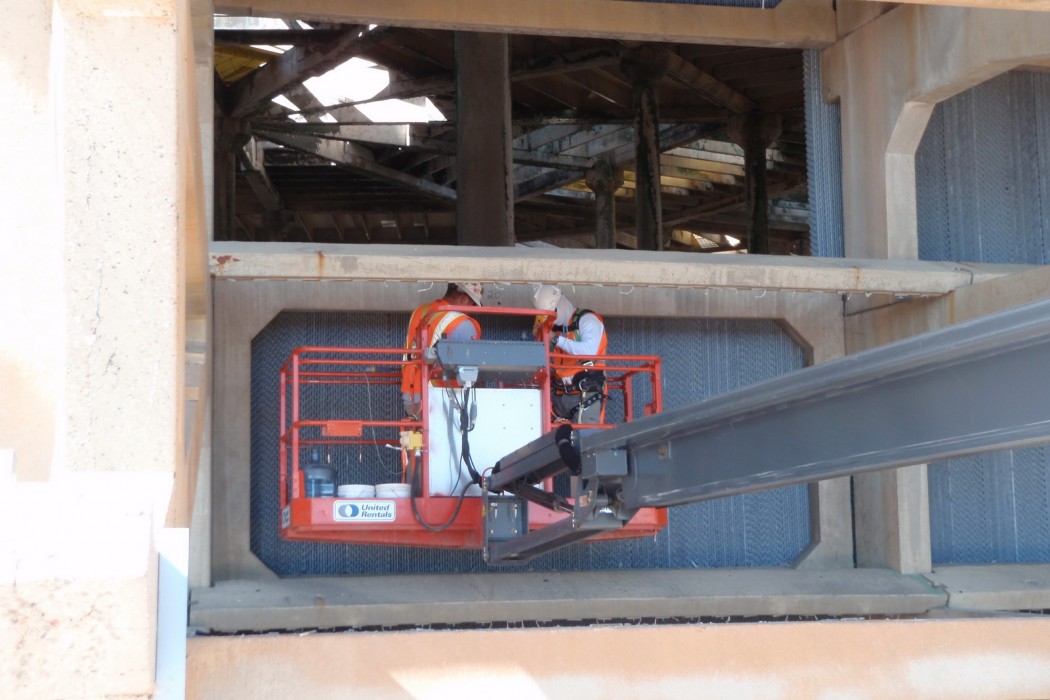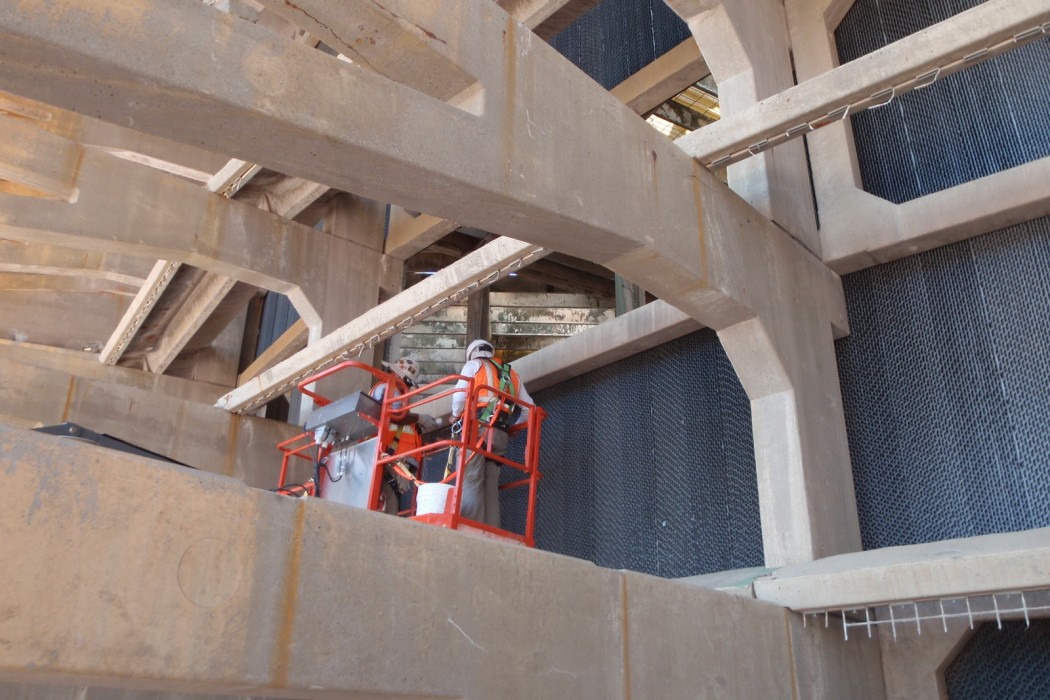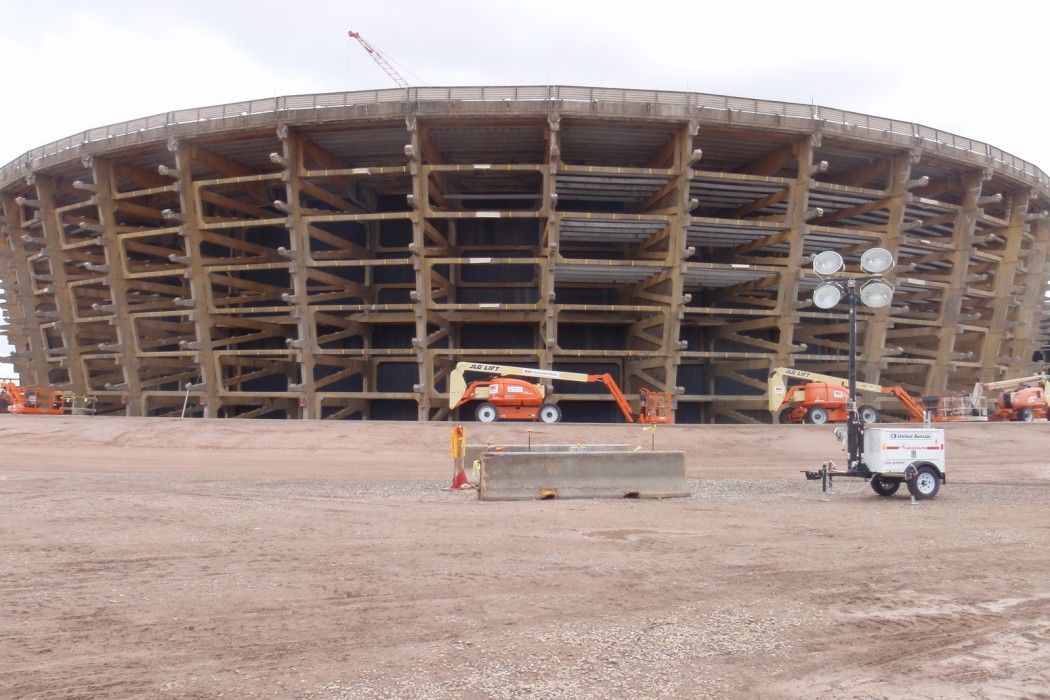WJE PROJECTS
Palo Verde Nuclear Generating Station Cooling Towers
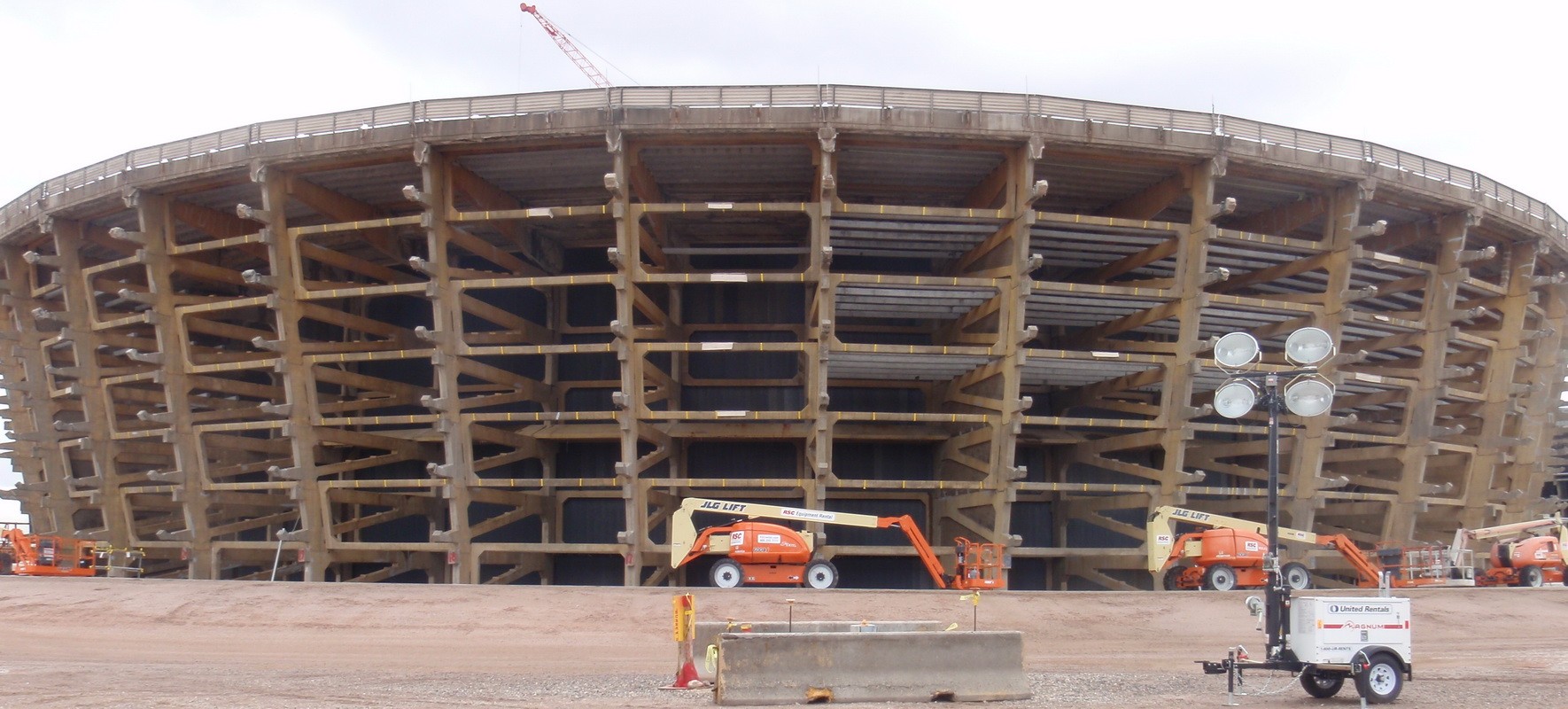
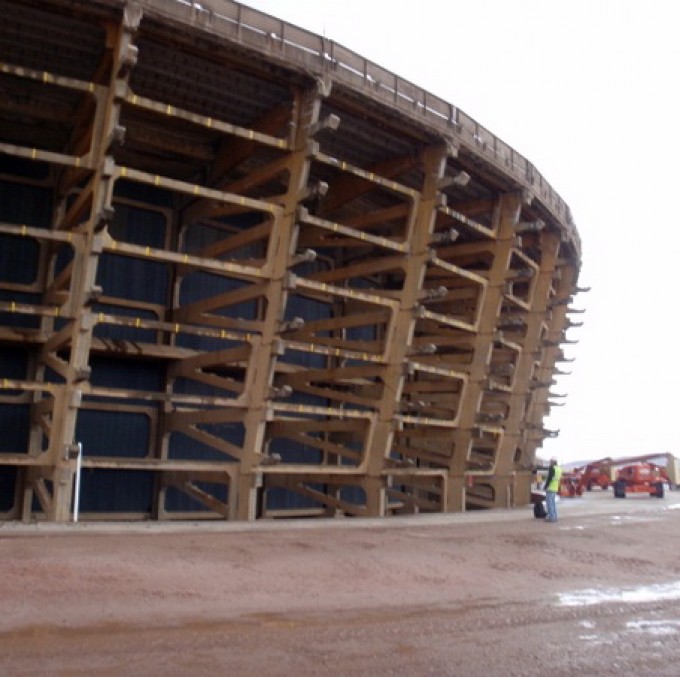
CLIENT |
Arizona Public Service |
LOCATION |
Tonopah, AZ |
Mechanical Draft Cooling Towers Condition Assessment
The mechanical draft cooling towers at Palo Verde Nuclear Generating Station have been in service for approximately twenty years, with a desired service life of an additional ten to fifteen years. To ensure the safe operation of these structures for the intended remaining service life, Arizona Public Service (APS) retained WJE to perform condition assessments of the structures twice a year over a multiyear period during scheduled outages and to identify characteristic distresses and provide repair recommendations.
BACKGROUND
There are nine precast concrete cooling towers of similar construction at the APS Palo Verde Nuclear Generating Station. The towers are configured into three groups of three cooling towers each, with each group corresponding to Unit Nos. 1, 2, and 3, respectively. These towers are Marley Class 700 round cross-flow, mechanical-draft, with the foundation and basin constructed by Bechtel. Each tower is approximately 303 feet in diameter and 46 feet in height. Several rehabilitation measures have been implemented over the years, including replacement of precast elements, surface repairs, and installation of sacrificial cathodic protection systems in the form of bulk zinc anodes.
SOLUTION
Each condition assessment performed by WJE engineers consisted of a visual survey and nondestructive testing of the radial bents and circumferential panels in the field as well as a laboratory study of material samples taken from selected elements observed. The field assessment included up-close tactile and from-grade cursory visual surveys, acoustic hammer sounding, making exploratory openings in select elements, and performing select nondestructive tests including a corrosion potential survey and corrosion rate testing. The laboratory study included performing chloride content testing on concrete powder samples obtained in the field. Through the field and laboratory studies, WJE engineers identified areas of the elements observed which exhibit greater corrosion induced deterioration and probabilities of ongoing corrosion. The engineers also made recommendations to APS regarding their current repair protocol as well as future repairs aimed at mitigating the progression of distress.
RELATED INFORMATION
-
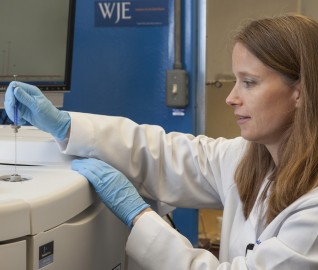 Our materials scientists provide comprehensive consulting services for the evaluation and... MORE >Services | Materials Evaluation and Testing
Our materials scientists provide comprehensive consulting services for the evaluation and... MORE >Services | Materials Evaluation and Testing -
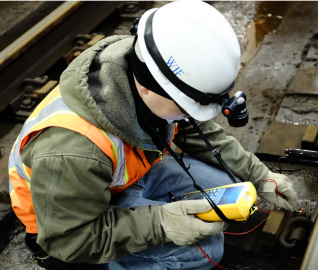 We have pioneered the use of nondestructive evaluation methods—such as ground penetrating... MORE >Services | Nondestructive Evaluation
We have pioneered the use of nondestructive evaluation methods—such as ground penetrating... MORE >Services | Nondestructive Evaluation -
 Our professionals deliver practical repair and rehabilitation services that maximize the... MORE >Services | Repair and Rehabilitation
Our professionals deliver practical repair and rehabilitation services that maximize the... MORE >Services | Repair and Rehabilitation




































